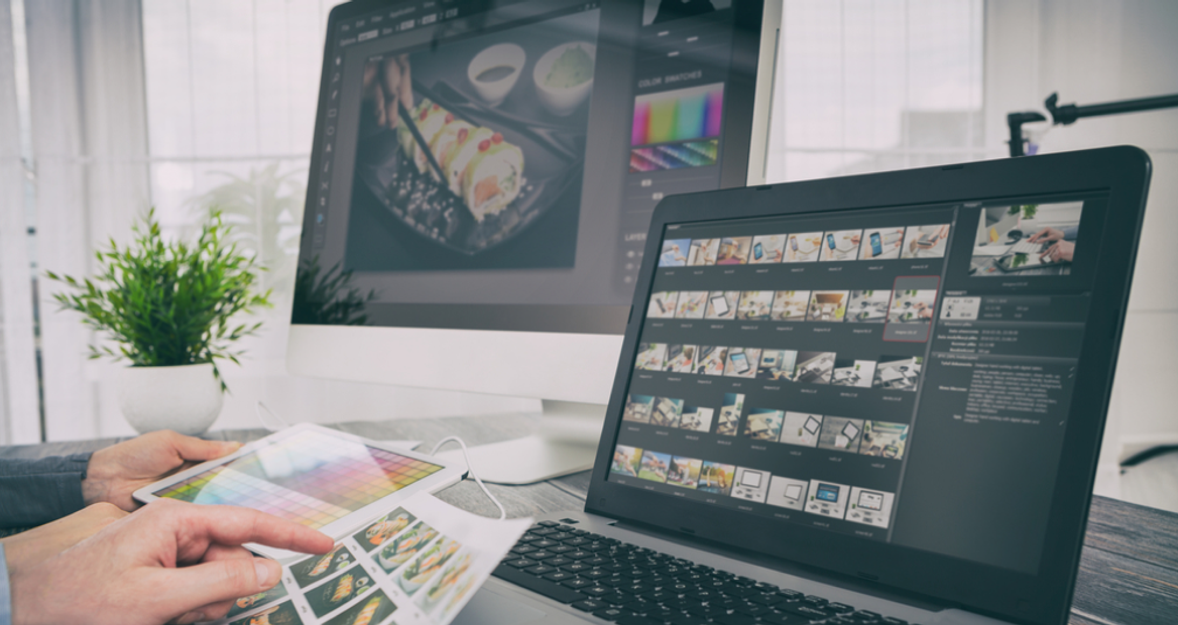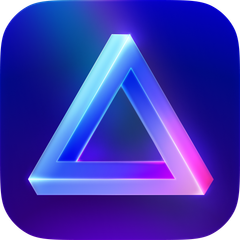Apps Like Photoleap: Top-Rated Apps For Edits In 2025
September 04, 2025

Discover the best apps like Photoleap in 2025. From AI-powered photo editing to creative effects and image generation, explore top-rated apps that elevate your edits.
In the modern era of photo editing, AI-driven technology is changing the way we work. Photoleap is a great example, with tools that range from simple enhancements to creative generators, even allowing you to apply tattoos to your subject.
It also offers AI image generation and special effects like moving elements that make water ripple or clouds flow.
The sheer variety of options in photo editing apps today can feel overwhelming, so I decided to explore the latest apps worth trying. Some cover the essential needs, while others bring in unique features that can take your edits further. Let’s take a look!
You may also like: Best Procreate Alternatives: For Windows, IOS, Android, iPad
1. Luminar Neo
 Best For: Landscape & Nature / Cityscape & Street / Portraiture
Best For: Landscape & Nature / Cityscape & Street / Portraiture
One of the first AI photo editing apps to make an impact was created by Skylum Software. It is designed to handle the heavy lifting for you, with one-click enhancements that can instantly improve your image. For example, the Structure AI tool brings out clarity and detail, giving your photos more depth and life. It’s one of the easiest ways to auto-fix photos without needing advanced editing knowledge.
A wide variety of essential editing needs are covered with smart AI tools, which means you can finish your edits faster and with a professional look.
For portrait photographers, there are dedicated tools that smooth skin, remove blemishes, and more. If you want to push things further, Luminar Neo also allows you to replace skies in your images. If a dull grey skyline has spoiled your shot, you can swap it for a vibrant sunset in seconds. The app even relights your scene so everything blends naturally.
Other standout features include object removal, AI photo expansion, and a focus stacking tool for macro, astro, and product work.
Pros | Cons |
Easy-to-use AI tools for beginners & pros | Export speed can be slower with large RAW files |
One-click enhancements (Structure AI, Sky AI, Relight AI) | Some AI tools don’t allow batch processing |
Dedicated portrait retouching features | File management less efficient compared to Lightroom |
Powerful object removal & AI expand | Occasional lags with heavy edits |
Affordable compared to Adobe suite | Fewer advanced manual controls for pros who want full precision |
Your AI-Powered Photo Editor for MacOS and Windows
Discover Now!2. On1
 Best For: Landscape & Nature / Cityscape & Street / Portraiture
Best For: Landscape & Nature / Cityscape & Street / Portraiture
Next up is On1, which offers plugins for Lightroom and Photoshop, but also has its own standalone photo editing software, Photo RAW. Alongside all the standard editing essentials, it includes some standout tools. One of the most impressive is Combine Photos, which lets you blend two images together with a seamless transition. It works in a similar way to Luminar Neo’s sky replacement, but instead of swapping skies, you can merge your own photos to create something unique.
The software also comes with smart masking features that automatically detect and select areas of your image, saving you time when making detailed edits. On top of that, there is a wide selection of filters and effects designed to speed up your workflow while giving you plenty of creative options.
Pros | Cons |
Works as both standalone editor and plugin for Adobe apps | Interface can feel more complex for beginners |
Combine Photos tool for creative blending | Not as fast or lightweight as some AI-only editors |
AI masking saves time on selections | Can be resource-heavy on older computers |
Wide range of creative filters & effects | Smaller community and fewer presets compared to Lightroom |
Flexible purchase options: subscription or perpetual license | Export process not as streamlined as Adobe’s |
3. Aperty
 Best For: Portrait / Fashion / Wedding
Best For: Portrait / Fashion / Wedding
Another app from Skylum, the makers of Luminar Neo, is Aperty, a photo-editing tool designed specifically for portrait photographers. Its goal is simple: to help you get professional results quickly. Like Luminar, it uses AI to take care of a lot of the heavy lifting with features such as facial recognition. This app does an amazing job of detecting faces and even breaking them down into individual elements.
This means you have dedicated tools for enhancing eyes, lips, and even eyebrows. Alongside the essentials like smoothing skin, removing blemishes, and brightening the face, you can also apply make-up to your subject. The results are impressively lifelike, with blusher, contouring and more available at a click, which is ideal if you didn’t have a make-up artist on set.
Because of these smart retouching features, Aperty is often seen as one of the most effective apps for AI picture touch-up, giving portrait photographers both natural and creative results in less time.
There’s a lot here for portrait photographers. You can take care of both your essential edits and your retouching in one place, while also exploring more creative options, all inside Aperty.
Pros | Cons |
Designed specifically for portrait photographers | Limited features for landscapes or other genres |
Detailed facial recognition (eyes, lips, brows) | Smaller toolset compared to Luminar Neo |
AI make-up tools with realistic results | Can feel niche — not an all-in-one editor |
Quick and intuitive retouching workflow | Subscription-only (no perpetual license yet) |
Ideal for weddings, fashion, and headshots | Lacks advanced layer and compositing tools |
4. PhotoLab8
 Best For: Fashion / Product / Portrait / Night
Best For: Fashion / Product / Portrait / Night
Next up is PhotoLab8 from DxO. The company is known for creating individual plugins for Photoshop and Lightroom, but you can also get the full editing package packed with features.
If you love colour grading, PhotoLab8 could be the right choice. Its DxO Wide Gamut tool gives you a precise and flexible colour space, which is perfect when you need accuracy in tones, especially for product or fashion photography. For low-light shooters, it also includes DeepPRIME, DxO’s impressive noise reduction tool that cleans up grain while keeping image quality high.
Another feature I rate highly is the U Point tool for local adjustments. You can click on an area such as a face, and the software automatically distinguishes the subject from the background. From there you can adjust exposure, contrast and other settings without affecting the surrounding area or the entire image.
PhotoLab8 is a powerful piece of software, and I see a lot of value for product and fashion photographers who need true-to-life colours and precise control.
Pros | Cons |
Industry-leading noise reduction (DeepPRIME) | Higher one-time cost compared to some editors |
Wide Gamut color space for precise grading | Steeper learning curve for beginners |
U Point tool for intuitive local adjustments | No built-in creative AI effects (e.g., sky replacement) |
Perpetual license (no subscription) | Fewer preset packs and community resources |
Excellent for product, fashion, and night photography | Limited retouching tools compared to dedicated portrait editors |
5. CaptureOne
 Best For: Portrait / Fashion / Wedding / Product & Food
Best For: Portrait / Fashion / Wedding / Product & Food
A name you will often hear in professional photography studios is CaptureOne. This software is particularly popular with portrait, fashion, food and product photographers. One of its biggest strengths is tethering. You can connect your camera directly, see a live view on screen, review photos instantly, and jump straight into editing.
It also comes with some impressive tools. Keystone, for example, automatically corrects horizontal and vertical lines, which is a lifesaver for product and food photographers who need precise presentation. There are also features for enhancing texture and detail, making products, clothing and food look vibrant and full of life. The smart cropping tool is another time saver, letting you apply consistent crops across a whole batch of images.
For portrait and fashion work, CaptureOne has a strong focus on colour control and skin retouching. You can smooth tones, remove blemishes, fix dark circles and polish your subject’s look without losing a natural finish.
CaptureOne has built its reputation on being a professional-grade tool, and I can see why so many studio photographers rely on it.
Pros | Cons |
Industry-leading tethering for studio work | More expensive than many alternatives |
Keystone correction for lines & perspective | Interface can feel complex for beginners |
Excellent color grading & skin tone control | Requires strong hardware for smooth performance |
Smart cropping & batch consistency tools | Perpetual license updates cost extra |
Professional reputation & reliability | Smaller preset ecosystem compared to Lightroom |
6. Affinity Photo 2
 Best For: Creative Photographers & Artists
Best For: Creative Photographers & Artists
Affinity Photo 2 feels a lot more than a standard photo-editing app. Before I get into the extras, let’s look at the basics. It covers all the essentials, from exposure and contrast control to tone curves and colour grading. For portrait photographers, there are tools to smooth skin, remove blemishes, and even erase unwanted objects with the Inpainting Brush. You can also colourise black-and-white images, which is a feature I think many will enjoy experimenting with.
What makes Affinity Photo 2 stand out is that it blends photography with digital art. It comes with a full library of brushes, so you can draw or paint directly on your images, or even create pieces from scratch. The layering system lets you build complex edits, combining adjustments, effects and live filters. This flexibility is also what makes Affinity Photo 2 one of the best photo collage app options if you enjoy building creative, multi-image compositions.
If you are someone who enjoys both photography and creating art, Affinity Photo 2 is a very fun and versatile tool to explore.
Pros | Cons |
One-time purchase (no subscription) | Lacks AI-driven tools like sky replacement or face relighting |
Covers all standard photo-editing essentials | Learning curve for non-artists |
Powerful Inpainting Brush & portrait tools | Not as fast for batch photo editing |
Unique mix of photography + digital art | Smaller ecosystem of tutorials & presets |
Extensive brush library & full layering system | No tethering or catalog management (unlike Capture One/Lightroom) |
7. Polarr
 Best For: Portrait / Fashion / Weddings & Events
Best For: Portrait / Fashion / Weddings & Events
Polarr currently has three apps available, though one is still in Beta. Designed with social media users in mind. Includes Retouch AI for quick portrait fixes, automated masking, and creative filters. It works as a powerful photo quality enhancer, helping you get the most out of your phone shots before uploading.
Their other app, Polarr Pro, is available for Mac and is a more advanced editing platform. It includes everything from the mobile app along with over 100 editing tools. These include extra masking options, lens distortion correction, curve controls and precise colour grading, making it a more complete choice for those looking for more control in their edits.
Polarr Next is their upcoming app, currently in Beta. It’s designed to speed up workflows for professional photographers, particularly those shooting events like weddings. Using AI, it can cull unwanted photos by analysing faces in real time and even learning your editing style to suggest the best images for clients. You edit a small selection as a reference and the AI takes care of the rest, saving huge amounts of time. It’s definitely one to keep an eye on for the future.
Pros | Cons |
Mobile-friendly, perfect for quick edits on the go | Mobile app limited compared to desktop software |
Retouch AI & automated masking save time | Not as feature-rich as Luminar Neo or Capture One |
Polarr Pro offers 100+ tools with strong color control | Workflow not as smooth for very large RAW files |
Polarr Next (Beta) could revolutionize wedding/event editing with AI culling | Still in Beta – not stable or fully released |
Very affordable subscription tiers | Smaller professional user base and fewer presets than Lightroom |
The Bottom Line
 So there we have it. For anyone looking for alternatives to Photoleap, there’s a strong selection to choose from. Versatile photographers might lean towards Luminar Neo or Polarr, while portrait specialists will find Aperty and CaptureOne perfect for saving time on retouching. For those with a creative streak, Affinity offers a mix of photography and artistry in one package.
So there we have it. For anyone looking for alternatives to Photoleap, there’s a strong selection to choose from. Versatile photographers might lean towards Luminar Neo or Polarr, while portrait specialists will find Aperty and CaptureOne perfect for saving time on retouching. For those with a creative streak, Affinity offers a mix of photography and artistry in one package.
Take some time to see which of these apps best suits your style and workflow. The good news is that many of them offer trial periods, so you can test several before committing. Try them out and see which one feels right for you.
FAQ
How much does Photoleap cost?
Pricing depends on the subscription plan. Photoleap typically offers weekly, monthly, and yearly options, with the yearly plan being the most cost-effective. The exact price can vary by region, but premium plans unlock the full suite of AI features and effects.
What makes Photoleap different from other photo editing apps?
Unlike many mobile editors, Photoleap combines traditional enhancements with creative AI tools. You can generate images, apply realistic effects like moving water or clouds, and even add elements such as tattoos, giving it a more experimental edge.
Is Photoleap free to use?
Photoleap offers a free version with basic editing tools, but many advanced features (like AI image generation, special effects, and pro filters) require a paid subscription.





